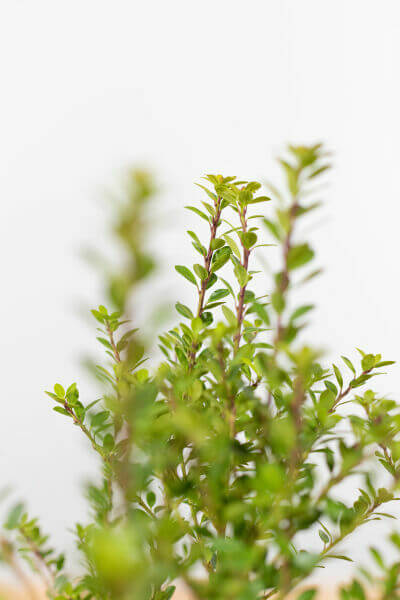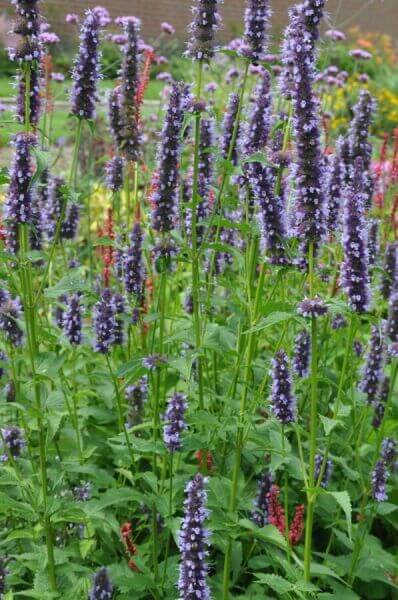Best Hedging Plants For Cool Climates
Best Hedging Plants For Cool Climates
Blog Article
Best Hedging Plants For Flowering Borders
Improve your garden's attraction with lavish hedge ranges such as Yew (Taxus), Thuja, Laurel, Photinia, and Bamboo, celebrated for their structural integrity and environmental advantages.
Yew and Thuja offer evergreen coverage and winter durability, while Laurel uses rapid development and broad, fragrant leaves.
Photinia includes seasonal charm with its dynamic red foliage, and Bamboo provides a low-maintenance, serene ambiance.
These hedges enhance air quality, lower noise, and produce tranquil, personal areas.
Correct planting, spacing, and maintenance guarantee energetic growth and environmental consistency.
Check out how these rich ranges can raise your garden's appeal and wellness.
Key Takeaways
Transform Your Garden With Lush Hedge Varieties
- Select Yew for its thick, evergreen development and unparalleled longevity.
- Select Laurel for its quick growth and broad leaves, ensuring quick privacy.
- Select Photinia for its dynamic seasonal foliage, which turns a striking dark red.
- Make use of Bamboo for a low-maintenance, winter-hardy hedge with visual appeal.
- Area plants 2-3 per meter and prune regularly for optimal growth and health.
Popular Hedge Plants
When transforming a garden with lush hedge varieties, it's important to think about popular hedge plants such as Yew, Thuja, Laurel, and Photinia due to their special characteristics and advantages.
Yew (Taxus) is extremely respected for its durability and thick, green development, making it a prime option for sustaining landscapes.
Thuja is kept in mind for its evergreen foliage and robust winter season strength.
Photinia includes seasonal vibrancy with red leaves that darken gradually, developing vibrant visual appeal.
Laurel uses fast growth and fragrant, broad leaves, ideal for quick personal privacy.
In Addition, Bamboo is an exceptional option for atmosphere, providing a low-maintenance, winter-hardy option that enhances the garden's visual with its sophisticated, swaying walking sticks.
These selections deal with a range of horticultural requirements and choices.
Advantages of Garden Hedges
Garden hedges provide a wide range of benefits, making them an important addition to any landscape. These natural barriers are economical to carry out and supply considerable wind protection, boosting air blood circulation and contributing to sound reduction. The dense foliage of hedges like Thuja and Beech makes sure privacy by obstructing exposure, creating a tranquil and remote environment.
Hedges also play a crucial function in microclimate regulation, supplying a stable environment that fosters plant development and reduces temperature level changes. Their intricate leaf structures filter contaminants, improving air quality and adding to a healthier garden ecosystem.
Furthermore, hedges master sound reduction, taking in and deflecting acoustic waves to lower ambient noise levels. This double functionality of offering both visual and acoustic privacy enhances the general tranquility and aesthetic appeal of any garden.
Planting and Upkeep Tips
For a successful hedge, precise preparation of the planting location is essential. Guarantee the soil has correct pH and drainage to support strong root development.
Area the plants appropriately for the picked species. Water the hedge regularly during its initial development stage, adjusting as needed with seasonal changes.
Execute a organized pest control and disease avoidance method, using organic or chemical treatments when needed. Frequently inspect for aphids, mites, and fungal infections.
Apply mulch to keep wetness and reduce weeds. Seasonal pruning promotes thick growth and air circulation, important for plant health.
Following these guidelines will assist you cultivate a lively, properly maintained hedge that boosts the appeal of your garden.
Spacing and Trimming Guidelines
Spacing and Trimming Guidelines
Proper spacing and trimming are essential for cultivating healthy, visually appealing hedges. Adequate spacing guarantees each plant receives adequate nutrients, light, and airflow.
Follow these guidelines for optimal hedge maintenance:
- Spacing: Position hedge plants 2-3 plants per meter to encourage robust growth.
- Pruning Techniques: Regular pruning is necessary for keeping wanted hedge height and shape. Cut brand-new growth in summertime and cut back older wood during winter.
- Seasonal Care: Change cutting approaches and schedules according to seasonal requirements to guarantee plant health.
- Hedge Height: Routinely monitor and trim to keep the preferred hedge height and accomplish uniform visual appeals.
Following these actions will guarantee your hedge prospers, improving both the appeal and functionality of your garden.
Picking the Right Hedge
Selecting the Right Hedge
Selecting the proper hedge includes evaluating factors such as fully grown height, foliage density, and environmental resilience. Effective hedge plant selection needs understanding each species' development characteristics and site-specific flexibility.
For instance, Yew (Taxus) provides excellent durability and dense growth, while Thuja is noteworthy for its winter season durability. Additionally, thinking about maintenance requirements is vital; fast-growing species like Laurel or Privet need regular cutting, whereas low-maintenance choices like Bamboo or Ivy may be more suitable for those looking for minimal maintenance.
Ecological elements such as soil type, light schedule, and moisture conditions need to also assist the selection process. This mindful approach ensures the picked hedges will thrive, offering both aesthetic and functional benefits to the garden landscape.
Shipment and Planting Advice
To ensure your hedge plants prosper, they should be provided by specialized couriers and planted immediately upon arrival.
Follow these essential steps for successful planting:
- Soil Preparation: Improve the soil with natural matter to improve drainage and nutrient material.
- Planting Depth: Develop a trench twice the width and equal to the depth of the root ball.
- Watering Strategies: Water thoroughly after planting, keeping the soil consistently damp however not saturated.
- Mulching: Apply a layer of mulch to keep wetness and reduce weeds.
Consumer Assistance and Service
Given the essential role of timely support in horticultural pursuits, our client assistance group is readily available 6 days a week through telephone, e-mail, and social media to offer expert guidance and quickly address any concerns. Their commitment to fast reaction times makes sure consumer fulfillment by solving questions associated with plant health, ideal planting techniques, and upkeep schedules.

-------------------
Telephone
Within 2 days
This detailed assistance system, strengthened by an outstanding 9.3/ 10 consumer ranking, highlights our dedication to enhancing the gardening experience for every client.
Often Asked Questions
For How Long Does It Consider Hedge Plants to Establish?
Hedge plants normally need one to 3 years to end up being totally developed, with the specific period differing by types and growing conditions.
Reliable care throughout this vital duration is vital for robust growth. Consistent watering, vigilant weed control, and appropriate fertilizer application are pivotal in promoting strong root development.
For instance, fast-growing types like Laurel might establish faster, while slower-growing varieties such as Yew may take longer. Thorough upkeep speeds up the facility process, resulting in dense and healthy hedges.
What Are the very best Hedge Plants for Privacy?
The question of the very best hedge plants for personal privacy includes assessing evergreen and deciduous options.
Evergreen hedges like Thuja, Laurel, and Cypress supply year-round protection, guaranteeing continuous personal privacy.
On the other hand, deciduous hedges such as Beech provide seasonal privacy, shedding leaves in cooler months.
Key maintenance tips for privacy hedges consist of routine trimming, fertilizing in spring, and proper spacing-- normally 2 to 3 plants per meter.
Furthermore, consistent watering and thorough weed removal are crucial for promoting healthy, thick growth.
Can Hedge Plants Bring In Wildlife to My Garden?
Yes, hedge plants can attract wildlife to your garden by providing vital benefits like shelter, food, and nesting websites, thus boosting local biodiversity. For example, yew, holly, and laurel are outstanding for attracting birds, while ivy supports a range of insects.
However, it is very important to note that there are some downsides, such as increased maintenance to handle bugs and regular maintenance. Carefully choosing and maintaining hedge varieties can assist balance these advantages and downsides, eventually promoting a lively and sustainable community in your garden.
Exist Any Blooming Hedge Plants Available?
Yes, there are flowering hedge plants offered that can enhance the charm of your garden.
For instance, Elaeagnus, likewise called Olive Willow, check here produces aromatic white flowers in the fall, including a touch of elegance.
Photinia, another popular choice, showcases dynamic red leaves that grow into an abundant green, creating a dynamic visual impact throughout the seasons.
To make sure these plants grow, it's important to practice appropriate pruning methods and seasonal upkeep, such as cutting new growth in the summer and cutting back in the winter.
These steps will assist keep the health and visual appeal of your blooming hedges.
How Do I Avoid Bugs in My Hedge Plants?
To avoid bugs in hedge plants, use natural pest control methods and maintain proper hedge care. Introduce beneficial insects like ladybugs, which prey on hazardous insects, to produce a well balanced community.
Routinely examine your hedges for signs of invasion and immediately eliminate any affected parts to prevent the spread. Ensure the health of your hedges by applying well balanced fertilizers and supplying appropriate water.
Make use of mulching to keep soil moisture and proper spacing to reduce plant tension and promote robust development. These practices jointly assist in reducing pest issues and keeping a healthy hedge.
Conclusion
In essence, picking the best hedge varieties such as Yew, Thuja, and Laurel can change any garden into a relaxing haven. These plants provide year-round plant, improve aesthetic appeal, and deal useful benefits like sound decrease and wind protection.
Correct planting methods, precise spacing, consistent watering, and seasonal trimming are essential for ideal growth.
Trusted shipment services and expert consumer support ensure a smooth experience from purchase to planting, making it simpler than ever to raise your outdoor area.
Garden hedges offer a plethora of benefits, making them an important addition to any landscape. These natural barriers are economical to implement and offer substantial wind security, boosting air flow and contributing to sound reduction. The thick foliage of hedges like Thuja and Beech ensures personal privacy by obstructing exposure, developing a remote and peaceful environment.

Pruning Strategies: Routine pruning is vital for preserving preferred hedge height and shape. Trim new growth in summer and cut back older wood during winter season.
Report this page